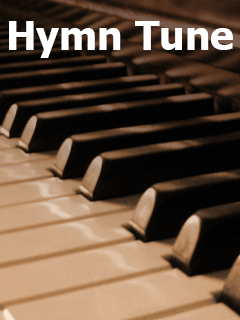- |
User Links
GOLDEN HILL

GOLDEN HILL
Composer (attributed to): Lucius Chapin; Composer (attributed to): Ananias Davisson; Composer (attributed to): Amzi Chapin (1832)Published in 71 hymnals
Printable scores: PDF, MusicXML
Audio files: MIDI
Composer (attributed to): Lucius Chapin
Lucius Chapin, 1760-1842 Born: April 25, 1760, Longmeadow (near Springfield), Massachusetts. Died: December 24, 1842, Hamilton County, Ohio. Buried: Originally at Walnut Hills Cemetery, Cincinnati, Ohio in 1842. Reinterred at Spring Grove Cemetery, Cincinnati, Ohio, January 26, 1858. Lucius’ brother was Amzi Chapin. In 1775, Lucius joined the Continental Army in Boston as a fifer; re-enlisting in 1776, he served at the Battles of Ticonderoga and Stillwater, and endured the infamous winter of 1777-8 at Valley Forge, Pennsylvania, with George Washington. After the war, he conducted singing schools in Ve… Go to person page >Composer (attributed to): Ananias Davisson
Ananias Davisson (February 2, 1780 – October 21, 1857) was a singing school teacher, printer and compiler of shape note tunebooks. Davisson was born February 2, 1780 in Shenandoah County, Virginia. He spent his last years living on a farm at Weyer's Cave, about 14 miles from Dayton, Virginia, and died October 21, 1857. He is buried in the Massanutten-Cross Keys Cemetery, Rockingham County, Virginia. Davisson was a member and ruling elder of the Presbyterian Church. He is best known for his 1816 compilation the Kentucky Harmony (Harrisonburg, Virginia), which is generally considered the first Southern shape-note tunebook. Composer and publisher William B. Blake said it was "a book characteristic of that period, abounding in minor tu… Go to person page >Composer (attributed to): Amzi Chapin
Amzi Chapin USA 1768-1835. Born in Springfield. MA, into a family of cabinetmakers, jewelers, and watchmakers, he followed in the same trade in Hartford, CT. for several years, then moved to New Haven, CT. He embarked on a career as an itinerant singing teacher, composer, and cabinetmaker in the South and Midwest. He married Hannah Power and they had eight children. They lived in Mount Pleasant, PA, where he taught singing and farmed for the next 30 years. He also founded a mill. He co-founded the Presbyterian congregation in Northfield Township. Chapin taught singing schools in VA, NC, KY, and PA. In 1831, he and his family moved to Northfield, OH. His older brother, Lucius, was also a singing teacher, and they were among the fi… Go to person page >Tune Information
| Title: | GOLDEN HILL |
| Composer (attributed to): | Amzi Chapin (1832) |
| Composer (attributed to): | Ananias Davisson |
| Composer (attributed to): | Lucius Chapin |
| Meter: | 6.6.8.6 |
| Incipit: | 13262 15651 65565 |
| Key: | D Major |
| Copyright: | Public Domain |
Alternative Tunes
Notes
Hymn Tune Index No. 15646. Earliest source is Ananias Davisson, Kentucky Harmony, 2nd ed. (Harrisonburg: Ananias Davisson, 1817), credited to Davisson there, but in the 3rd ed. (1819) it was unattributed.
HTI notes the similarity between this tune and No. 4077b, WORCESTER, which traces to Andrew Law, Select Harmony (Cheshire, 1778), where it was credited to "Wood," although the resemblance is only in the first two phrases.
See also No. 14590, THIRTIETH, first printed in Robert Patterson, Patterson's Church Music (Cincinnati: Browne and Looker, 1813), and credited to "Chapin" in John Armstrong, The Pittsburgh Selection of Psalm Tunes (Pittsburgh: Cramer, Spear & Eichbaum, 1816).
Another variant is No. 11003, THE GENERAL DOOM, from Jeremiah Ingalls, The Christian Harmony (1805).
For further reading, see James W. Scholten, "Frontier Singing Master and Folk Hymn Composer," Journal of Research in Music Education, Vol. 23, No. 2 (Summer 1975), pp. 109-119, https://www.jstor.org/stable/3345284; also David Warren Steel & Richard H. Hulan, The Makers of the Sacred Harp (Urbana: University of Illinois, 2010), p. 181.
—Chris Fenner & David W. Music


 My Starred Hymns
My Starred Hymns




